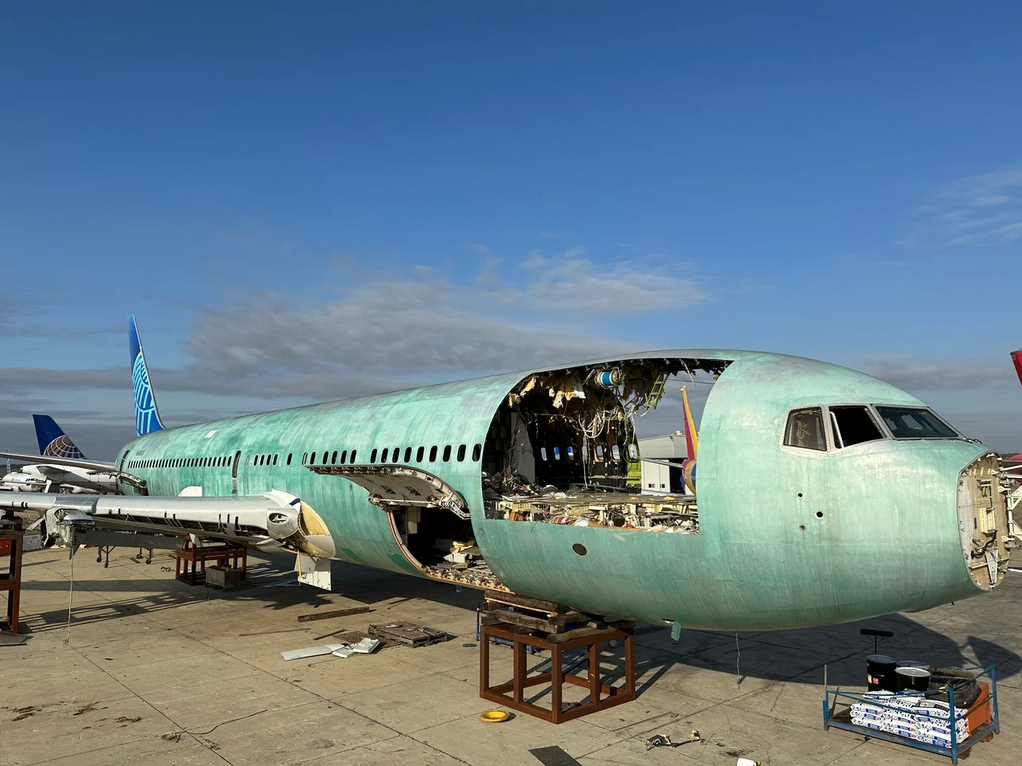For three decades, the Boeing 767-322ER, registered as N646UA, graced the skies as a stalwart of United Airlines’ fleet. Born in the early 1990s, this aircraft became a symbol of reliability, innovation, and the evolution of long-haul travel. Here’s a look back at its journey, culminating in its retirement in 2022.
Early Years and Service
N646UA was delivered to United Airlines in April 1991, at a time when the 767 was at the forefront of transatlantic and transpacific routes. It was part of the fleet expansion that allowed United to connect continents with efficiency and comfort. With its twin-engine design, the 767 offered a balance of fuel efficiency and passenger capacity, making it a favorite for both the airline and passengers traveling on routes like Newark to Geneva.
The aircraft was powered by two General Electric CF6-80C2B6 engines, known for their reliability and efficiency. The 767-300ER variant offered a maximum takeoff weight of 412,000 pounds and a range of approximately 5,990 nautical miles, making it suitable for United’s long-haul international routes.
A Workhorse Over the Atlantic
Throughout its service, N646UA was a regular on routes spanning the Atlantic, often ferrying passengers from the bustling hubs of the U.S. to the historic cities of Europe. Its performance was marked by an impeccable safety record, with no significant incidents reported. This reliability was not just a testament to the aircraft’s design but also to the rigorous maintenance and operational standards upheld by United Airlines. The aircraft underwent multiple interior configurations to align with changing passenger expectations and competitive pressures. In its later years, N646UA featured United’s Polaris business class, enhancing the premium passenger experience on long-haul flights.
The Turn to Retirement
The retirement of N646UA in 2022 was not due to age or wear alone but was precipitated by a discovery during routine maintenance. As the aircraft was undergoing a scheduled repaint to the new Evo Blue livery, technicians found significant signs of corrosion. This finding, while not uncommon in older aircraft, especially those exposed to the salty air of oceanic routes, marked a critical point in the lifecycle of N646UA.
Corrosion was discovered on critical structural areas, including the nose section, tail cone, and along the crown of the fuselage from nose to tail. The extent of the corrosion was substantial, raising concerns about the aircraft’s structural integrity and airworthiness.
Given the severity of the corrosion and the associated repair costs, United Airlines faced a decision regarding N646UA’s future. The aircraft had accumulated approximately 118,000 flight hours and 18,000 cycles by this time. Considering its age and utilization, the airline determined that investing in extensive repairs was not economically viable. Consequently, N646UA was retired from service in 2022.
Post-Retirement Life
After retirement, N646UA was ferried to Tupelo Regional Airport (TUP) in Mississippi for storage. The ferry flight was conducted unpressurized due to the identified structural concerns. In 2024, MotoArt, an organization specializing in preserving aviation history, acquired sections of N646UA’s fuselage to create PlaneTags—unique mementos for aviation enthusiasts. This initiative ensures that the legacy of N646UA endures, allowing collectors to own a tangible piece of aviation history.
These tags, made from the actual fuselage of N646UA, were not just souvenirs but a testament to the plane’s enduring legacy. Each PlaneTag bore the marks of its journey – the color, thickness, and even the wear and tear – making every piece a unique artifact.
Its PlaneTags have been released on February 6, 2025 in several variants from fuselage sections without paint (primer) and colored tail sections with Evo Blue tail logo, that was fully painted already at time of retirement. Some rare ones even feature a honeycomb structure on their back, that have been crafted from aircraft components that utilize composite honeycomb sandwich panels. These panels consist of a lightweight honeycomb core sandwiched between two thin layers of material, typically aluminum or composite skins. This design provides exceptional strength-to-weight ratios.
Legacy and Reflection
Despite its retirement due to unforeseen maintenance issues, N646UA remains an important part of United Airlines’ history. The Boeing 767-300ER played a crucial role in the airline’s international expansion and provided a bridge between older widebodies like the DC-10 and newer-generation aircraft.
N646UA’s story is emblematic of the lifecycle of many commercial aircraft – from the excitement of its maiden flight to the solemnity of its retirement. It served United Airlines with distinction, contributing to the airline’s vast network and operational success. The reasons for its retirement underscore the challenges airlines face: balancing safety, economics, and fleet evolution.
For aviation enthusiasts and experts, the tale of N646UA is a poignant reminder of the relentless march of technology and the bittersweet necessity of letting go of the old to embrace the new. Its contribution to aviation history, now immortalized in PlaneTags, ensures that even in retirement, N646UA continues to inspire and tell the story of an era where the Boeing 767 was a king of the skies.
Image (c) Planetags

